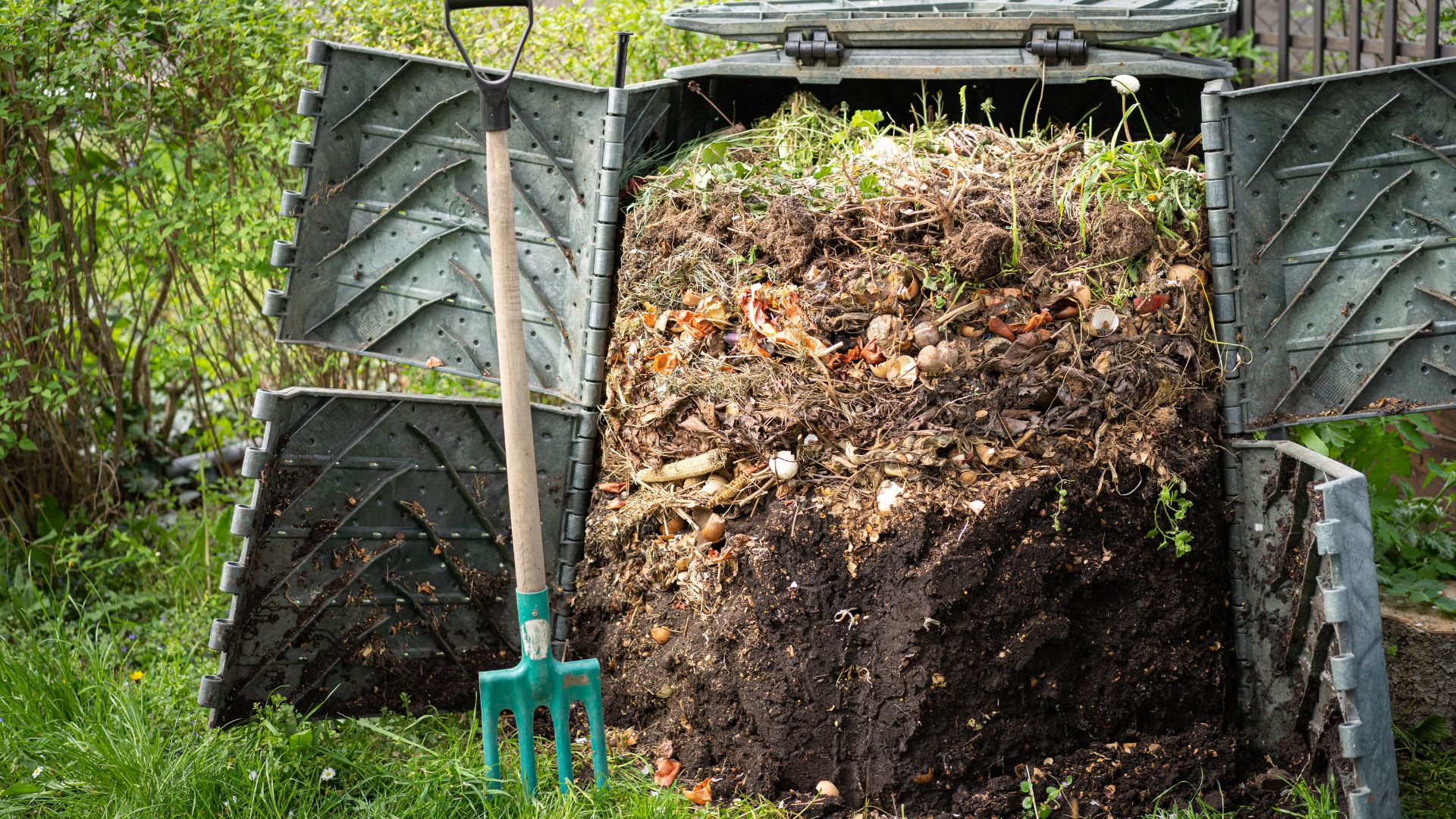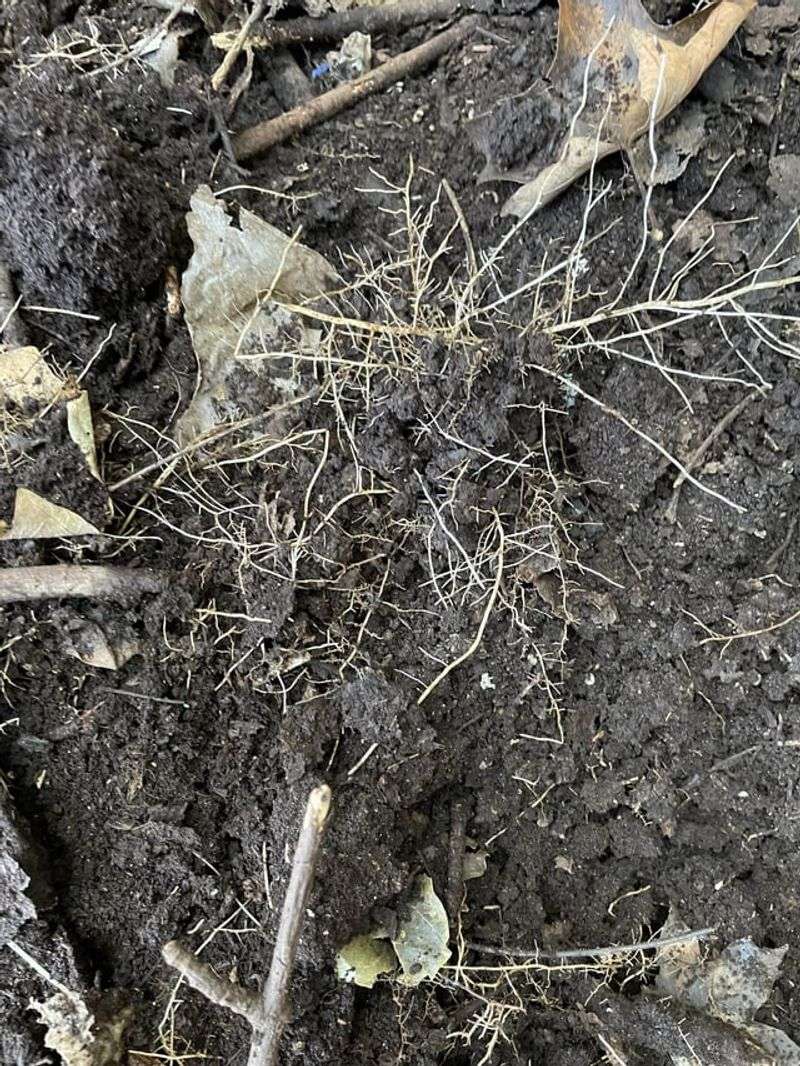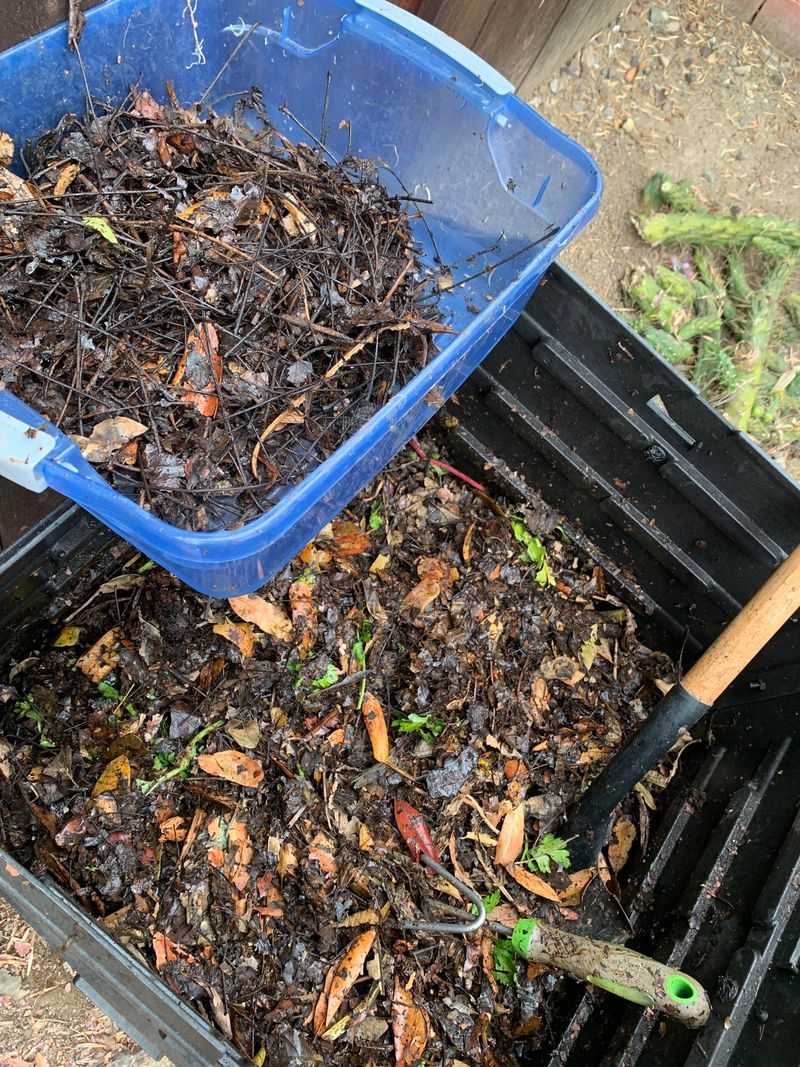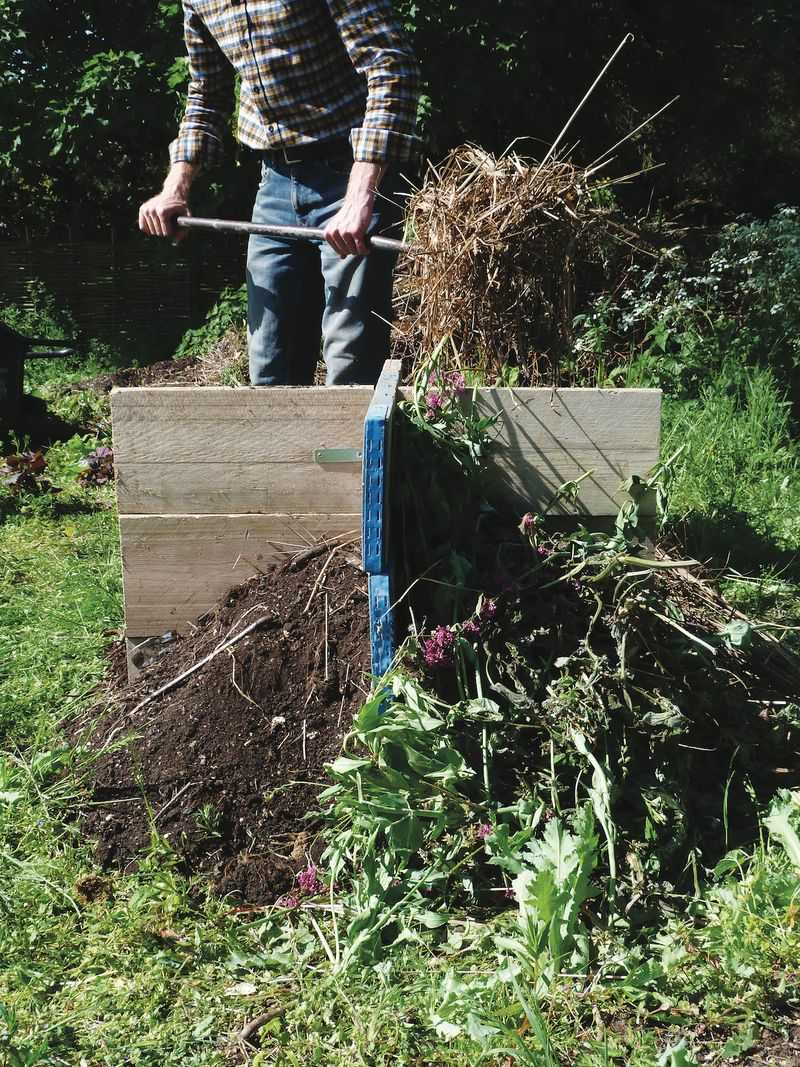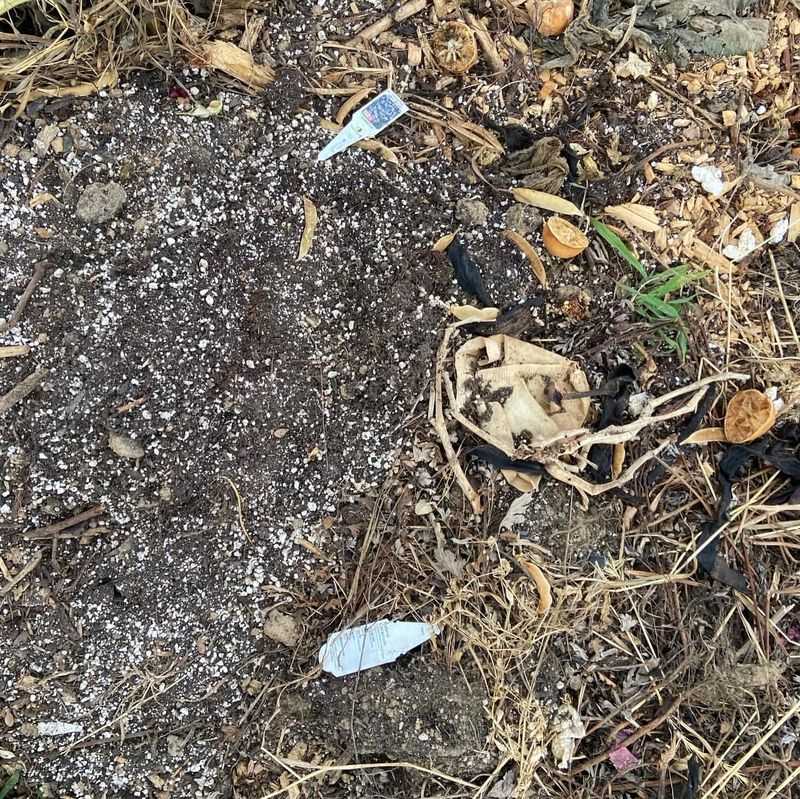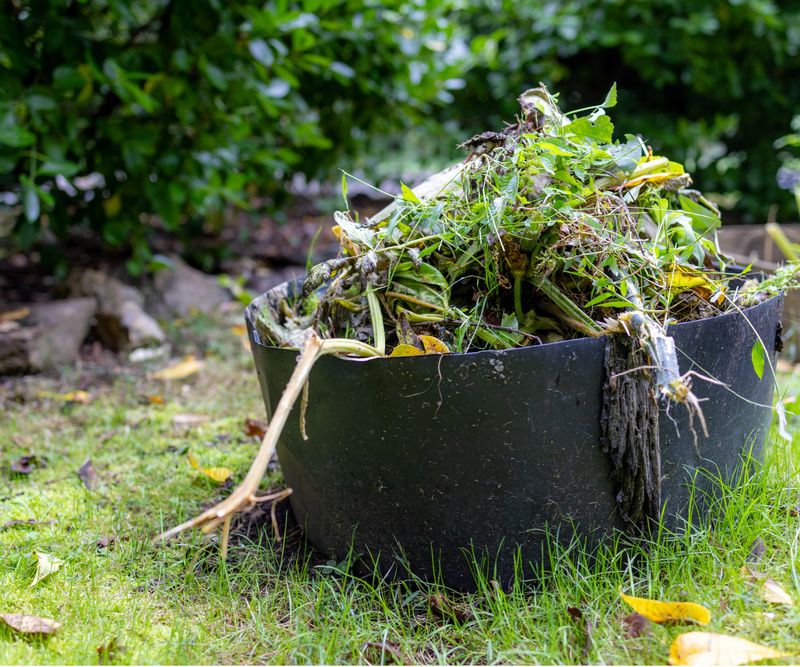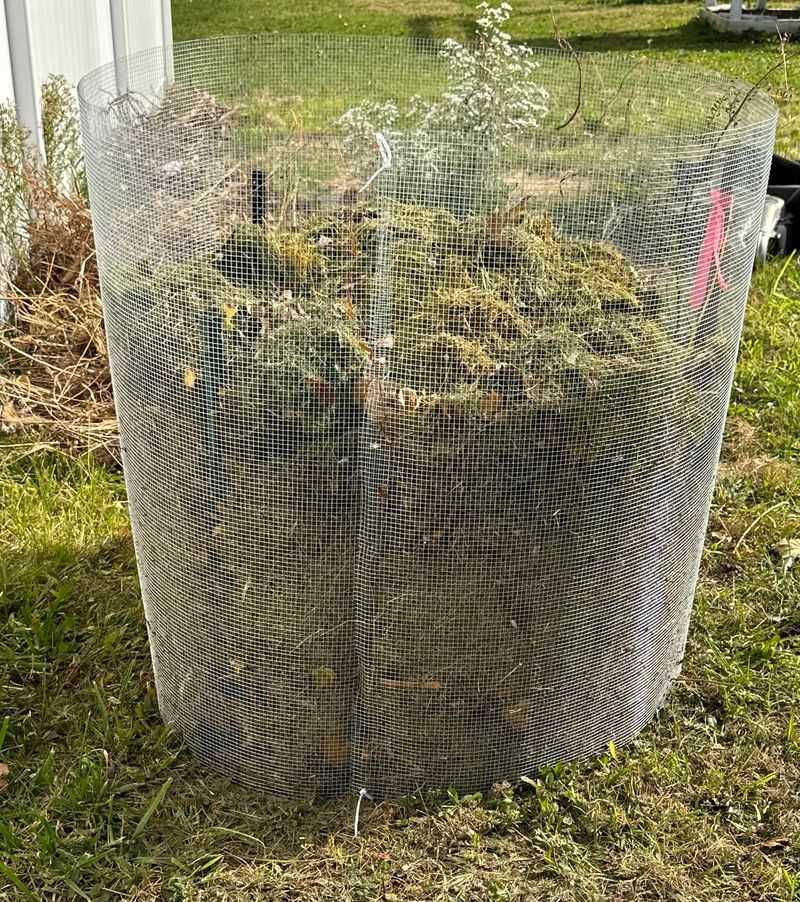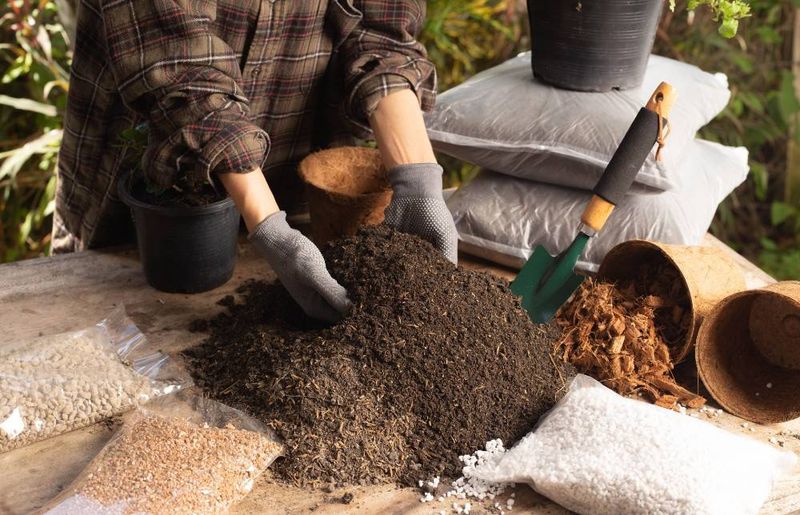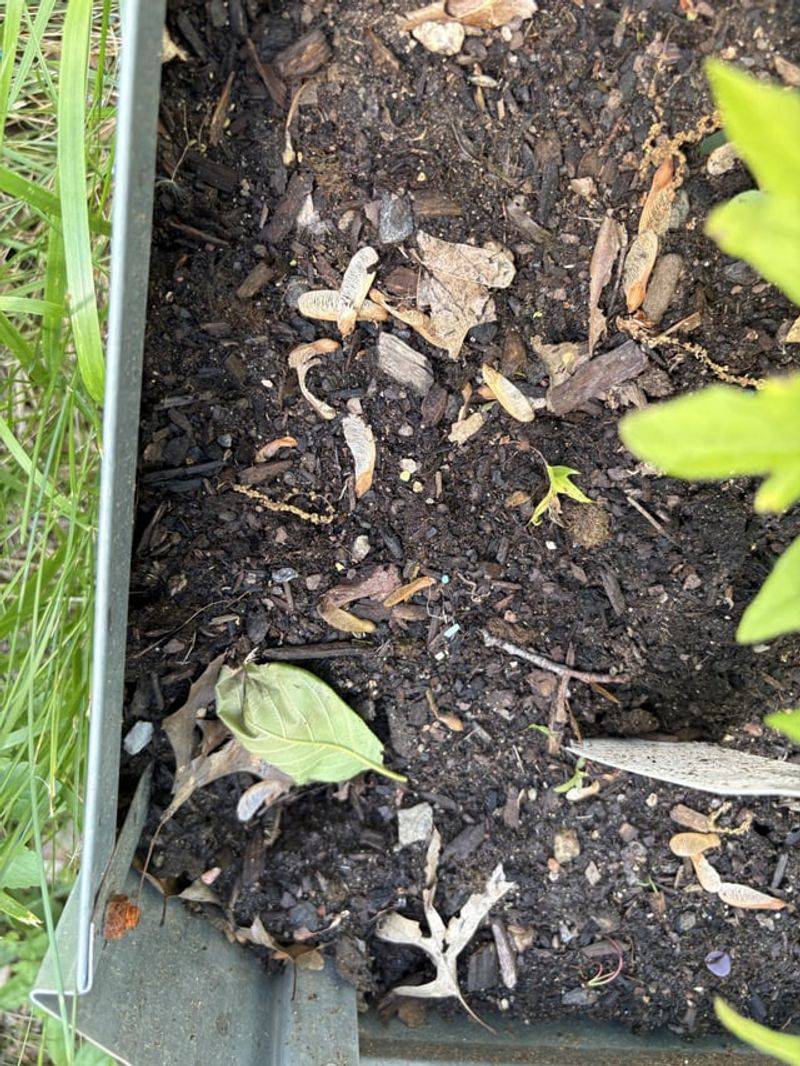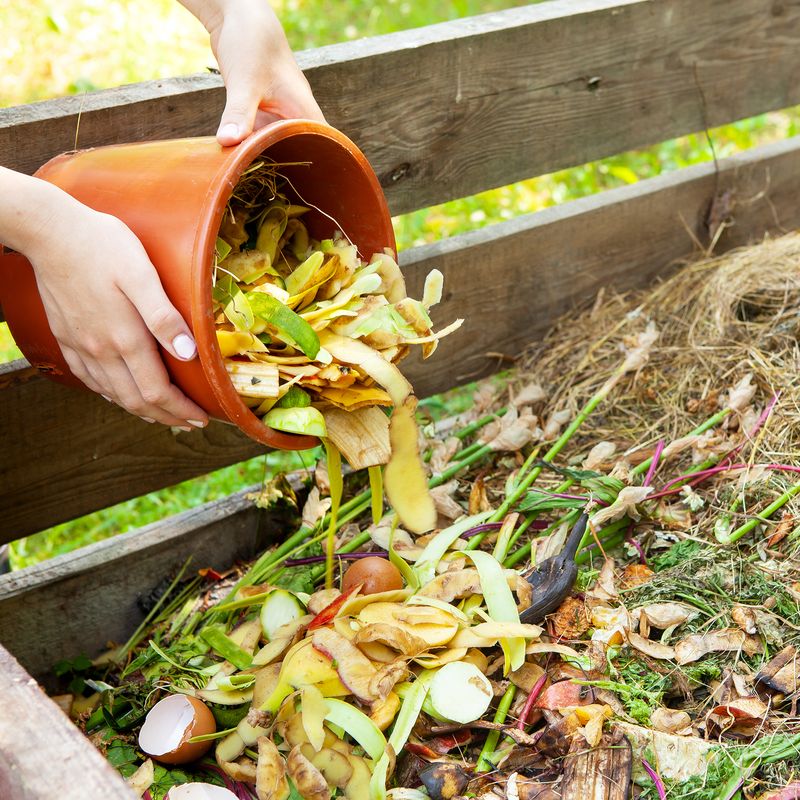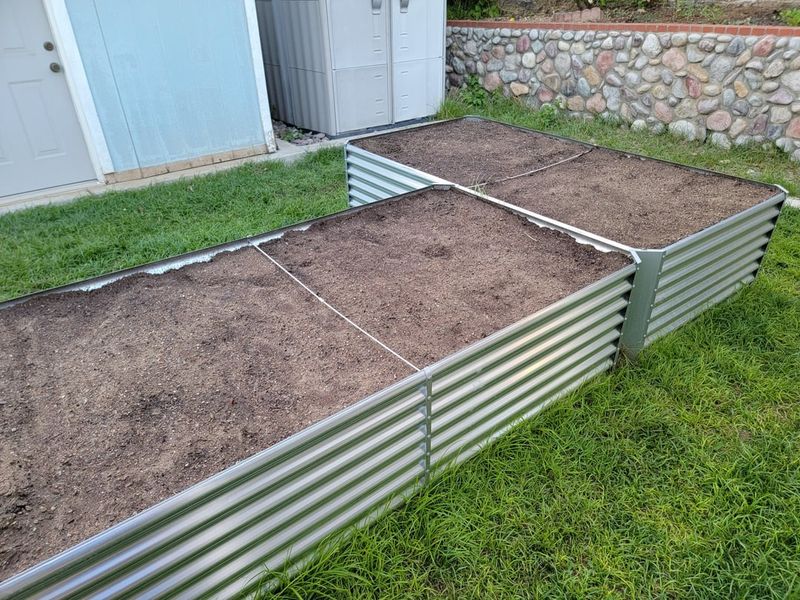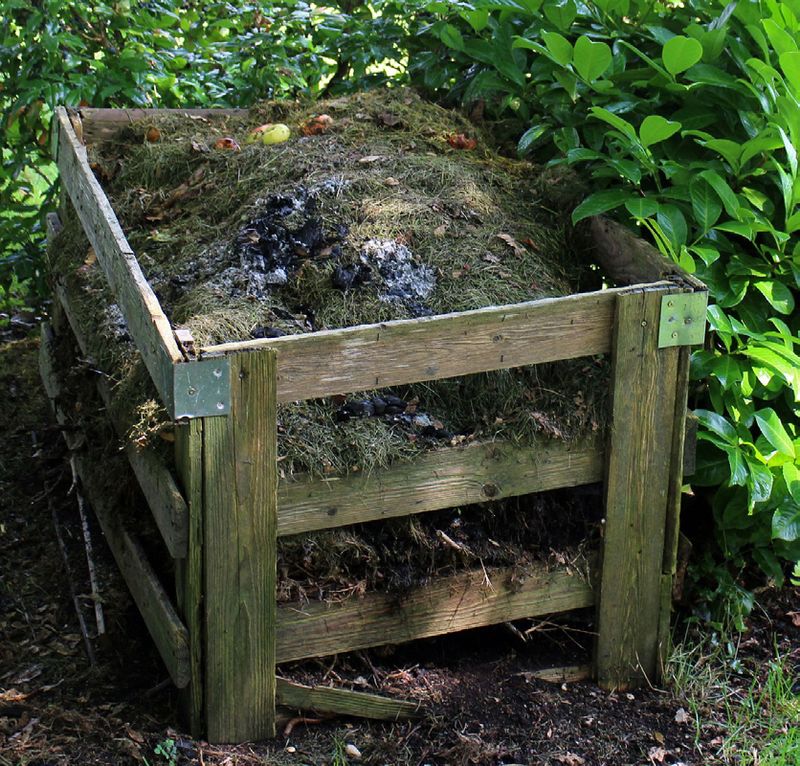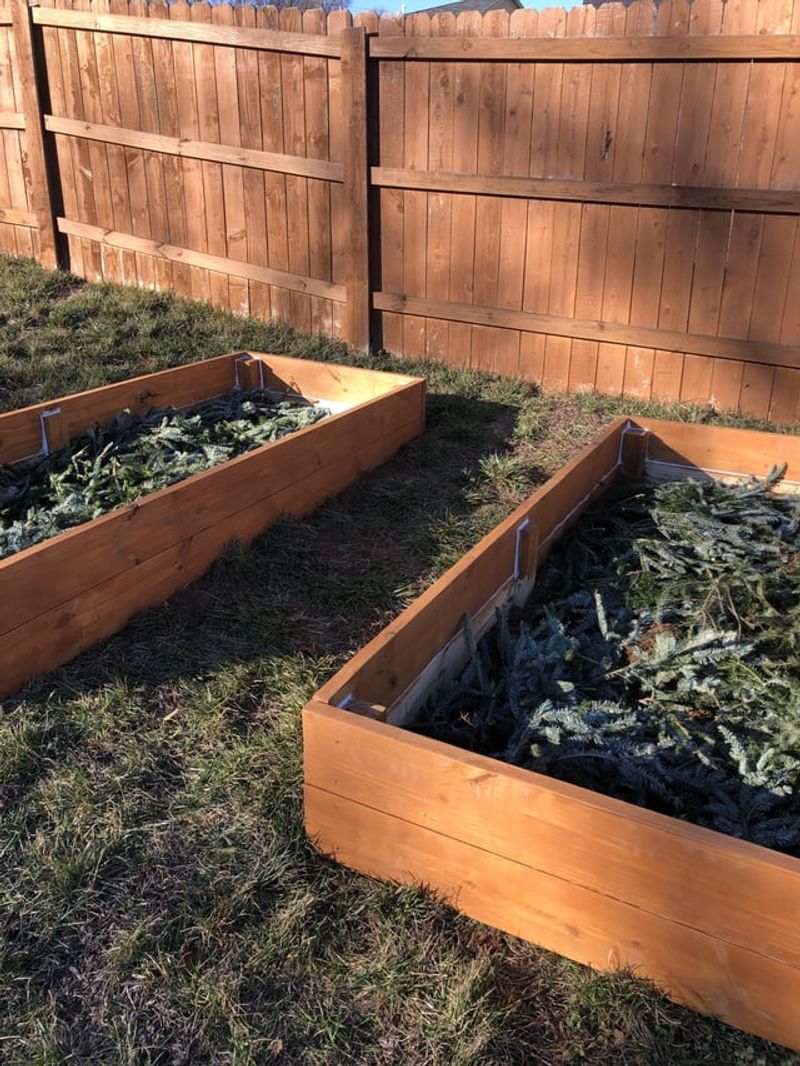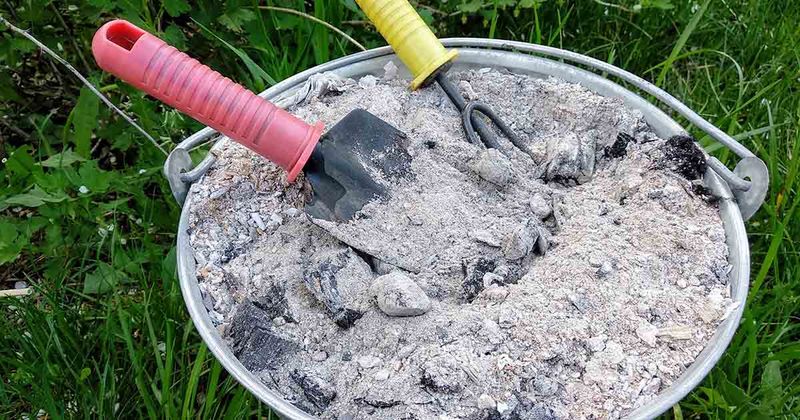Good compost is pure gold for Ohio gardens—but getting it right takes more than tossing scraps in a pile. With clay-heavy soil and shifting seasons, small composting missteps can lead to big problems underground.
Many gardeners unknowingly sabotage their efforts by adding too much woody material, neglecting moisture, or skipping regular turning. These habits can slow decomposition or create an imbalance that harms rather than helps.
To get rich, garden-friendly compost, tailor your approach to Ohio’s quirks. Watch moisture levels in summer, insulate piles in winter, and balance your browns and greens. Your soil will thank you—with blooms to prove it.
1. Ignoring Ohio’s Seasonal Temperature Swings
Many local gardeners leave compost piles exposed during our harsh winters and scorching summers. This exposure to extreme temperatures slows decomposition dramatically and kills beneficial microorganisms that break down organic matter.
In summer, uncovered piles dry out quickly in Ohio’s humidity fluctuations. During winter, freezing temperatures halt the decomposition process entirely.
Consider using an insulated bin or creating a larger pile that maintains internal heat better through our unpredictable Midwest weather patterns.
2. Adding Diseased Plants To The Pile
Tossing those powdery mildew-covered squash leaves into your compost seems convenient, but it’s a recipe for disaster in Ohio gardens. Our humid summer conditions already favor disease proliferation.
Home compost piles rarely reach temperatures high enough (140°F+) to kill pathogens. When you spread this compromised compost, you’re essentially distributing disease throughout your garden beds.
For Ohio gardeners dealing with our challenging humidity, diseased plant material should always go in municipal yard waste where industrial composting can properly eliminate pathogens.
3. Forgetting The Carbon-Nitrogen Balance
The infamous compost smell plaguing many Ohio neighborhoods comes from piles with too much nitrogen (green materials) and not enough carbon (brown materials). The result is a slimy, stinky mess that attracts pests.
Our state’s deciduous forests provide abundant fall leaves – perfect carbon sources that many gardeners underutilize. Aim for roughly 3 parts brown materials to 1 part green.
Storing autumn leaves in bags or bins gives you a ready carbon source throughout the year, essential for balancing kitchen scraps and grass clippings.
4. Neglecting To Turn The Pile
Passive composting rarely works well in Ohio’s clay-dense soil regions. Without regular turning, oxygen can’t reach the center of your pile, creating anaerobic conditions that slow decomposition and create foul odors.
Stagnant piles become compacted, especially after our heavy spring rains. This compaction further reduces airflow and beneficial microbial activity.
Get your pitchfork out every 1-2 weeks to incorporate oxygen throughout the pile. Your neighbors will appreciate the reduced smell, and your compost will finish much faster despite our challenging Midwest conditions.
5. Adding Meat And Dairy Products
Nothing attracts Ohio wildlife to your yard faster than meat scraps in the compost. Our state’s raccoons, opossums, and even coyotes have an excellent sense of smell and will tear apart your carefully maintained pile.
Beyond wildlife concerns, meat and dairy create unhealthy bacteria growth and putrid odors. These materials break down differently than plant matter and often introduce pathogens.
Keep your compost vegetarian in our wildlife-rich state. For meat and dairy disposal, consider municipal composting programs available in many Ohio communities that use high-temperature methods.
6. Composting Invasive Plants And Seeds
Ohio battles several aggressive invasive species, from Japanese knotweed to garlic mustard. Throwing these plants into your compost is a serious mistake that spreads these problems throughout your garden.
Most home compost piles don’t reach temperatures high enough to kill persistent seeds and root fragments. Even tiny pieces of some invasives can regenerate into new plants.
Bag these problematic plants separately and dispose of them according to Ohio Department of Natural Resources guidelines – never add them to your compost where they can multiply your invasive plant problems.
7. Using Too Many Grass Clippings
Fresh lawn clippings from Ohio’s common cool-season grasses create dense, matted layers that block airflow and water penetration in compost piles. The high nitrogen content generates excessive heat and ammonia smells.
Many Ohio homeowners dump entire mower bags directly into their compost, creating wet, slimy layers that slow decomposition. This common practice leads to anaerobic conditions and unpleasant odors.
Thin out grass additions by mixing thoroughly with brown materials or letting clippings dry in the sun for a day before adding to your pile. Better yet, practice grasscycling by leaving clippings on your lawn.
8. Incorrect Moisture Management
Our Ohio climate swings between soggy springs and dry late summers, making compost moisture control challenging. Many local gardeners don’t adjust their watering practices seasonally.
A pile that’s too wet drowns beneficial organisms and creates anaerobic conditions with unpleasant odors. Too dry, and decomposition slows to a crawl as microbes go dormant.
Your compost should feel like a wrung-out sponge – damp but not dripping. During our rainy seasons, cover your pile; during dry periods, water occasionally. This balance is especially crucial with Ohio’s clay soils that drain poorly.
9. Overlooking Compost Location
Placing compost bins in full shade under Ohio’s abundant maple trees seems logical to prevent drying, but it significantly slows decomposition by keeping temperatures too low. Conversely, full sun locations dry out quickly in our summer heat.
Many Ohio gardeners also position piles too far from the house for convenience. When it’s 20°F with snow in January, that distant pile becomes inaccessible.
The ideal location gets morning sun but afternoon shade, especially during our hot summers. Position your bin within easy reach of both your kitchen and garden, with consideration for our seasonal weather extremes.
10. Adding Synthetic Chemicals
Some Ohio gardeners unknowingly add treated lawn clippings containing herbicides to their compost. These chemicals persist through the composting process and damage plants when the compost is applied.
Particularly problematic are persistent herbicides like clopyralid and aminopyralid that remain active for years. They’re commonly used on Ohio lawns and hayfields but destroy vegetable gardens when composted.
Avoid adding grass clippings if you’ve used weed killers, and never add plants treated with systemic pesticides. When buying manure or hay for composting, ask specifically about herbicide use.
11. Using Excessive Citrus And Onions
Many Ohio gardeners dump all kitchen scraps indiscriminately into compost, including large amounts of citrus peels and onion remnants. These acidic materials in excess can disrupt the pH balance crucial for decomposition.
Citrus peels also contain d-limonene, which can repel or harm beneficial worms that are essential for healthy compost, especially in our naturally acidic Ohio soils. Onions and garlic can deter helpful decomposers.
Limit these materials to small amounts, chopped into tiny pieces to speed breakdown. For Ohio’s typically acidic soils, maintaining neutral compost pH is particularly important for vegetable gardens.
12. Applying Unfinished Compost
Impatience leads many Ohio gardeners to use compost before it’s fully decomposed. Recognizable food scraps and partially broken-down materials indicate compost that isn’t ready for garden use.
Unfinished compost continues decomposing in your garden, temporarily robbing plants of nitrogen – the “nitrogen robbery” effect. This problem is especially noticeable in Ohio’s cool spring soils when plants need every nutrient advantage.
Wait until your compost resembles rich, dark soil with an earthy smell and no recognizable original materials. For Ohio’s growing season, aim to have compost finished by early spring.
13. Forgetting To Inoculate New Piles
Starting compost from scratch without introducing beneficial microorganisms significantly delays decomposition, especially in Ohio’s clay soils that may lack diverse microbial life. New piles often sit stagnant for weeks without proper inoculation.
A handful of finished compost or garden soil introduces the microbes needed to jumpstart the decomposition process. This simple step can cut weeks off your composting time.
For Ohio gardeners dealing with heavy clay or newly constructed properties, this step is particularly important as native beneficial organisms may be limited in disturbed soils.
14. Composting Weeds With Mature Seeds
Ohio’s persistent weeds like dandelion, chickweed, and crabgrass produce thousands of seeds that survive inadequate composting. Home piles rarely reach temperatures hot enough to kill these seeds.
Many gardeners unknowingly create “weed distribution systems” instead of compost. The seeds remain viable and sprout enthusiastically when the compost is spread, creating more work than before.
Pull weeds before they flower and seed. For weeds with seeds, either send them to municipal composting (which reaches higher temperatures) or solarize them in black plastic bags before adding to your pile.
15. Using Excessive Wood Ash
With many Ohio homes using wood stoves for winter heating, excess ash often ends up in compost piles. While small amounts add valuable minerals, too much raises pH dramatically and can create alkaline conditions harmful to plants.
Ohio’s native soils tend toward acidity in many regions, but over-correction with ash creates new problems. High-alkaline compost damages acid-loving plants like blueberries, rhododendrons, and many evergreens common in Ohio landscapes.
Limit wood ash to no more than 5% of your compost volume. Test your soil pH before applying ash-heavy compost, especially in naturally alkaline areas of western Ohio.

